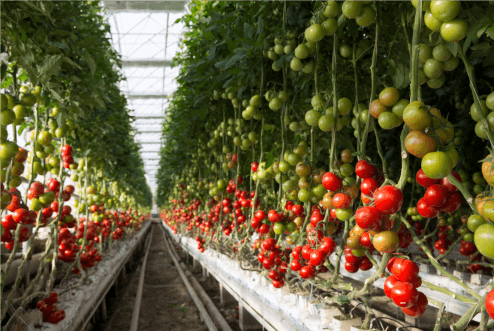- The Basics of Agriculture
Agriculture relies heavily on the environment. Seasonal variations, such as daylight duration and temperature, are pivotal in plant growth. For instance, tropical plants thrive in heat, while some crops can survive cold conditions. With climate change, the predictable nature of these seasons is shifting, making farming challenging. - Traditional Agriculture
The dawn of agriculture, roughly 12,000 years ago, marked our transition from nomads to settlers. Tools like hoes and ploughs revolutionised farming, making it more efficient. Despite these innovations, traditional agriculture was labour-intensive. Such conventional practices persist in certain regions even today. - Modern and Industrial Agriculture
Emerging in the 1950s, modern agriculture introduced machinery, chemicals, and large-scale production methods. It increased productivity but at a cost – environmental damage and health issues. - Urban Farming
The essence of urban farming is growing plants in city settings. Urban gardens, ranging from community plots to school gardens, can be traditional or innovative, like container gardens or vertical setups. They offer environmental, social, and personal benefits, bridging the gap between city life and nature. - Vertical Farming
An evolution in agriculture, vertical farming focuses on stacked layers of crops. Traditional terracing and new-age urban indoor farming both fall under this. It offers solutions to challenges like climate change and growing urban populations. Vertical farming methods include:
- Soil-Based Cultivation: Traditional but not ideal due to its weight and pest-prone nature.
- Bioponics: Replaces soil with elements like nutrient-rich water or animal waste.
- Hydroponics: Roots bathe in a nutrient solution, conserving water and avoiding chemicals.
- Aeroponics: Plants are suspended, and roots are misted with nutrients.
- Aquaponics: A combination of fish farming and plant cultivation with fish waste-feeding plants.
While vertical farming promises a greener future with many advantages, it’s challenging. High initial costs, energy consumption, and limitations in crop variety are some downsides.
Agriculture is a dynamic field, ever-evolving to meet global challenges. While traditional practices laid the foundation, modern urban and vertical farming innovations are paving the way forward. As we gear up to feed an ever-growing population in a changing climate, embracing these new methods will be crucial.






Comments are closed